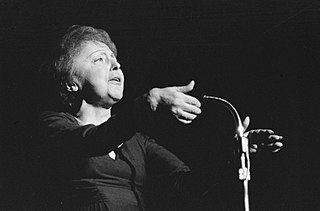| May I Come In? | ||||
|---|---|---|---|---|
 | ||||
| Studio album by Blossom Dearie | ||||
| Released | 1964 | |||
| Recorded | February 13-15, 1964 | |||
| Genre | Vocal jazz | |||
| Label | Capitol | |||
| Producer | Dave Cavanaugh | |||
| Blossom Dearie chronology | ||||
| ||||
| Professional ratings | |
|---|---|
| Review scores | |
| Source | Rating |
| AllMusic | |
May I Come In? is a 1964 studio album by Blossom Dearie, arranged by Jack Marshall. [2]

Margrethe Blossom Dearie was an American jazz singer and pianist. She was physically petite, with a recognizably light and girlish voice. One of the last supper club/cabaret performers, she performed regular engagements in London and New York City over many years. She collaborated with many musicians, including Johnny Mercer, Miles Davis, Jack Segal, Johnny Mandel, Duncan Lamont, Bob Dorough, Dave Frishberg and Jay Berliner.
Jack Wilton Marshall was an American guitarist, composer, arranger, and conductor. He was the father of producer-director Frank Marshall and composer Phil Marshall. He was also the cousin of classical guitarist Christopher Parkening.


